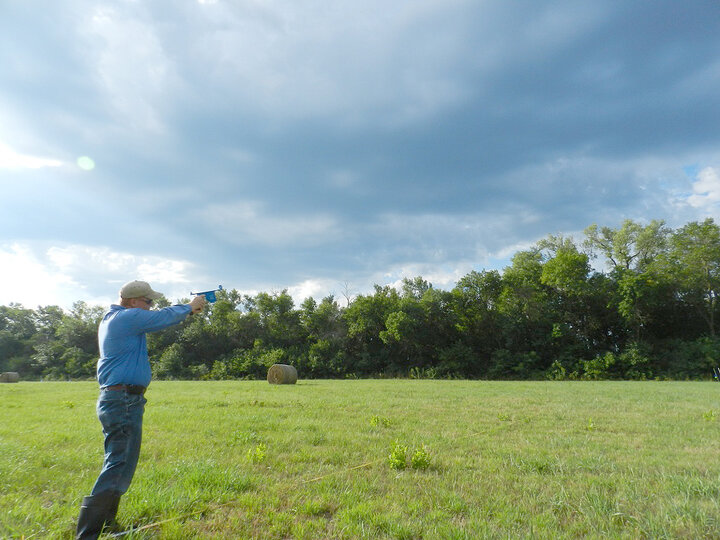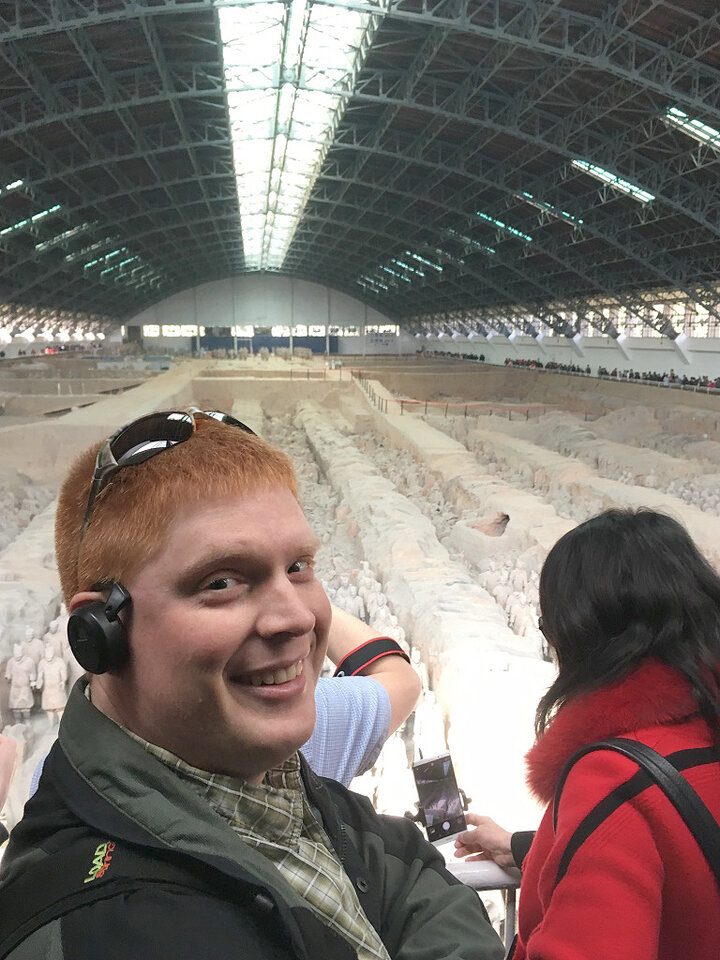Digging into Extension, a CropWatch feature series, shines a spotlight on the professionals of Nebraska Extension, highlighting their roles in extension and services they provide to Nebraska farmers and ranchers.
If you ask Wayne Ohnesorg how his fascination with insects began, the first thing you’ll hear is a chuckle.
A native of Sidney, Nebraska, Ohnesorg grew up in the city, and like many city kids, his curiosity about animals started right there in the backyard, investigating all the skittering creatures in the grass. He was endlessly intrigued — though his up-close examinations were sometimes a bit over-enthusiastic.
“My mom always used to say that was my interest since I was three and smashing ants,” Ohnesorg said with a genial laugh. “They’ve always just fascinated me.”

But unlike most city kids, Ohnesorg’s captivation with insects wasn’t a youthful phase or summertime boredom. He spent his youth studying insects and learning about their importance and functions in our ecosystem, from pollination to pest and weed control. After a year of community college, Ohnesorg decided to pursue his passion for all things six-legged, and when he left home for the University of Wyoming, it was to become an entomologist.
After earning his bachelor’s in agroecology at UW with minors in insect biology, agricultural entomology and soil science, he tacked on an entomology master’s from Iowa State University in 2008 — all the while, never forgetting a sage bit of advice from his community college biology instructor.
“He was very interested that I was leaning towards entomology for a career path,” Ohnesorg explained. “He said, ‘If you can tie that into extension, you’ll have a career for life.’”
It was guidance that Ohnesorg took to heart. In 2008, he returned home to a job at the Pierce County Extension Office, where he was the new crops educator with an entomology focus. After about three years, he received a change of duty station to Madison County, which became his permanent assignment.
In the years since, he’s collected two more extension counties and a Ph.D. in entomology from the University of Nebraska-Lincoln, expanding his repertoire to help Nebraskans with all their insect inquiries and bugaboos.
The Buggier Side of Extension
As a Nebraska Extension entomologist, Ohnesorg has been standing at the forefront of the fight against unidentified flying insects in Nebraska for nearly 15 years.
He remembers being steeped in phone calls during the two separate years that abnormally large populations of orange sulphur — also known as alfalfa butterflies — swarmed the state. In 2015, Ohnesorg and his fellow Nebraska entomologists were swamped during Nebraska’s first major surge of wheat stem maggot, and again in 2021 when a fall armyworm invasion of unprecedented numbers hit crops and pastures, even lawns.

Residents of Ohnesorg’s extension region — Madison, Pierce and Antelope counties — rely on him even more so for assistance with in-house pests, often transporting their captured home invaders to his office for help with identifying and thwarting the unknown assailants.
“It’s the oddball stuff that shows up regularly, [insects] our ag industry people generally aren’t aware of,” Ohnesorg said.
Whether it’s in a corn field or a couch cushion, Ohnesorg handles all things insect — from identification and management strategies to helping producers with training and certifications as pesticide applicators.
However, despite being an insect aficionado, Ohnesorg’s position as an extension educator means he’s also a dabbler of many agricultural arts.
“I had no idea I would know as much as I do now about managing turf grass,” he said, chuckling. “I can pretty well rattle off info, without looking anything up, about managing turf grass now.”
He helps Nebraskans with a gamut of common ag concerns — herbicide rotation issues, crop diseases, weed control, land rents, application timing. But there’s plenty of the atypical questions coming his way too — when to harvest cattails, whether robins can walk. (The robin one admittedly stumped him, and he still can’t answer it.)
“I enjoy the variety — you never know what’s going to walk in the door,” Ohnesorg said. “And (I enjoy) when my producers share their stories with me, because you don’t always know what they’re dealing with unless they’re willing to talk to you. And that’s where some of the best stuff comes from.”
Like the time Ohnesorg was trying to help a frustrated farmer eradicate some persistent bushy growth along a creek on his land. Once Ohnesorg got his hands on a sample of the bush and realized they’d been waging war on mulberry trees, it changed their whole gameplan.

Ohnesorg helps ag youth too, visiting classrooms to give talks or conduct field experiments where students sweep for insects to examine. He's heavily involved in 4-H Club workshops, co-authored a 4-H entomology manual, and he's been an advisor on numerous student FFA projects — one of which placed fifth at nationals. He’s also served as co-superintendent for the entomology zone at the Nebraska State Fair.
Despite all there is for him to juggle, Ohnesorg still finds time for his own research. He recently provided species data for a new Nebraska bee manual, and right now he’s working on an unexpected discovery involving an unusual flight pattern of bees in hayed native meadow near tree rows.
“It’s different,” Ohnesorg remarked of the bees’ behavior. “When I get enough data points, it’ll be a publication.”
It’s just one of the many little curiosities that spurred a career of studying the insect kingdom and set him on the path to extension, where he can share his knowledge and discoveries with the rest of the world.
“I enjoy helping others solve their issues,” Ohnesorg said. “Extension is important to the ag industry because we’re not trying to sell the producers anything other than knowledge. We want them to do better.
“We’re invested in their wellbeing.”
Wayne Ohnesorg is an extension educator and entomologist for Madison, Pierce and Antelope counties. To connect with him, email wohnesorg2@unl.edu or call 402-370-4040. You can also see him on Backyard Farmer.

